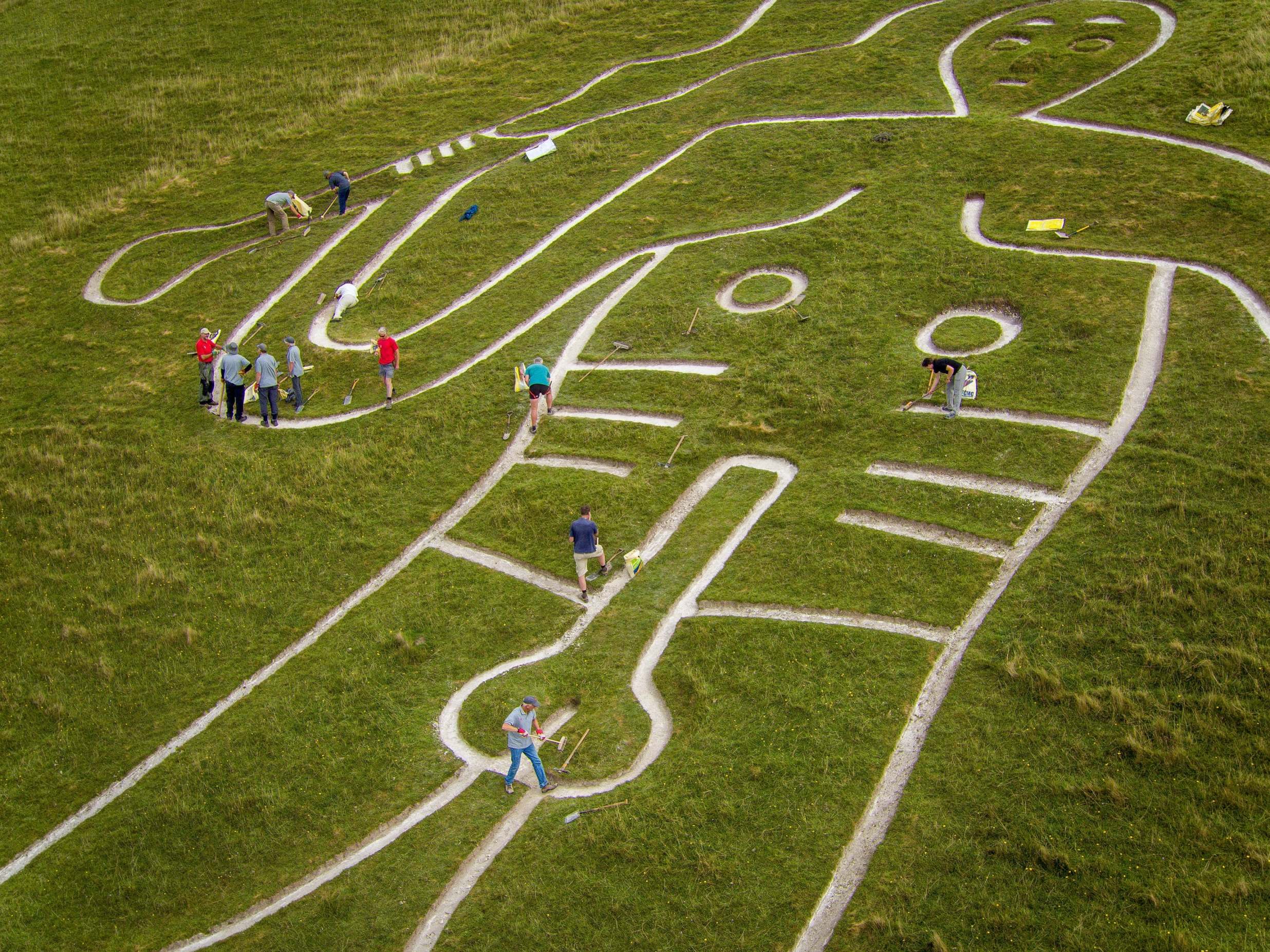Cerne Abbas chalk giant is not prehistoric, snail remains suggest
Famous 180ft figure on Dorset hillside may only be a few hundred years old, new analysis finds

An ancient naked man sculpted into a chalk hillside in Dorset is unlikely to be prehistoric as was once believed, archaeologists have said.
The Cerne Abbas giant may only be a few hundred years old, say researchers whose investigations into the age of the 180ft figure received assistance from a surprising source: snails.
Shells unearthed at the site of Britain’s largest chalk figure – depicted brandishing a club and, notoriously, a 35ft erect penis – indicate the artwork could not have been carved any earlier than medieval times, they added.
Fragments of snail species that first arrived in the country in the 13th and 14th centuries were discovered in soil samples contemporaneous with the giant.
The National Trust, which owns the site, and researchers from the University of Gloucestershire began tests earlier this year to determine the age of the giant, whose origins and purpose remain shrouded in mystery.
Tests of soil samples extracted from the hillside have been delayed due to the coronavirus pandemic, with results not expected until later this year.
But separate analysis by environmental archaeologist Mike Allen of tiny snail shell fragments found at the site suggest the giant “may have been a rather more recent addition to the Dorset landscape than some have suggested”.
No trace of species brought over by the Romans from France as food were found at the site, but microscopic fragments of snails thought to have arrived accidentally in packing straw from Europe in the 13th and 14th centuries were discovered.
This suggests the figure “may not be prehistoric, nor even Roman, but may belong to more recent times”, wrote Mr Allen and the National Trust’s Martin Papworth in the magazine Current Archaeology.
A National Trust spokesperson told The Independent the archaeologists had made “tentative early suggestions about the age of the Cerne Abbas giant” but that “full analysis is ongoing and results will be made available as soon as possible”.
Mr Papworth said full soil sample test results would likely indicate “a date range, rather than a specific age, but we hope they will help us better understand, and care for, this famous landmark”.
The earliest recorded mention of the giant, gifted to the National Trust by the Pitt-Rivers family 100 years ago, was in 1694.
Theories about its origins range from an ancient fertility symbol and likeness of Greco-Roman hero Hercules to a caricature of Oliver Cromwell.
Brian Edwards, a historian at UWE Bristol, suggested the artwork may have been created in the late 17th century by Anthony Ashley-Cooper, the future third Earl of Shaftesbury, and used as a propaganda tool depicting King William III as Herculean.
Other researchers believe the giant could have been carved by local landowner and MP, Baron Holles of Ifield, a bitter foe of Cromwell, and see the club as a reference to repressive rule and the phallus a mockery of the republican leader’s Puritanism.
Gordon Bishop, chair of the Cerne Historical Society, previously said Cerne Abbbas villagers were keen to know the truth about the local landmark.
“Although there are some who would prefer the giant’s age and origins to remain a mystery, I think the majority would like to know at least whether he is ancient or no more than a few hundred years old. Whichever may be the case, he is unique,” he said.
Join our commenting forum
Join thought-provoking conversations, follow other Independent readers and see their replies
Comments
Bookmark popover
Removed from bookmarks